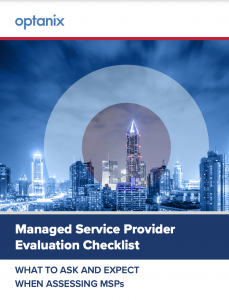
5 Key Benefits of Remote Infrastructure Management
There was a time when the thought of handing over the management of your organization’s IT infrastructure to an outside party had multiple layers of concerns. These concerns revolved around remote infrastructure monitoring and management via third-party service providers. Such concerns spanned the spectrum of vulnerabilities: security, confidentiality, reliability, effectiveness, and capability.
The remote work trend that was amplified by the pandemic put these concerns to rest. Over the past couple of years, most organizations proved that all activities related to IT infrastructure monitoring and management can, in fact, be performed remotely. After all, the vast majority of IT organizations were forced to rely on a remote workforce.
Ironically, this unanticipated reliance on off-site remote infrastructure monitoring and management has proven the value and effectiveness of remote services and the vendors that provide them. Today it’s clear to tech leaders that the benefits of Remote Infrastructure Management (RIM) services are many and far outweigh any of the old-school perceptions of risk that blocked their development for so many years. This post focuses on five clear benefits of RIM.
 Need insight on evaluating a managed service provider for your organization? Download this MSP Evaluation Checklist to ensure you select the best partner.
Need insight on evaluating a managed service provider for your organization? Download this MSP Evaluation Checklist to ensure you select the best partner.
Benefits of Remote Infrastructure Management (RIM)
1. Business Continuity and Resilience
With Covid still affecting day-to-day operations everywhere, RIM capabilities provide the ability for businesses to continue their operations using distributed access and management. When coupled with virtualization and cloud-based capabilities, this service completely mitigates the risks associated with natural disasters that could knock out a dedicated physical site, such as a RIM support center or a data center.
The rise of automation in RIM delivery also provides tangible benefits when it comes to previously manual tasks, such as routing software updates and patches to combat infrastructure vulnerabilities.
2. Security and Data Governance
The rise of remote working and e-business brings huge concerns around security. To start with, every participant is engaging remotely, so sensitive data is always on the move, being passed around with every transaction and engagement.
RIM fits perfectly into this scenario. By its very definition, RIM is focused on the management of distributed access and authentication mechanisms. Further, RIM provides continuous monitoring to ensure adequate encryption and secure protocols are in use and to look for breaches or vulnerabilities in the infrastructure.
There are well-established ISO standards that outline security frameworks around the situations described above. And from a data governance standpoint, RIM services can ensure that organizations are in compliance with GDPR and other requirements.
3. Financial Implications
Partnering with a RIM vendor immediately brings about cost benefits. By turning to RIM, you don’t have to hire staff or maintain the dedicated talent pool necessary to perform IT infrastructure monitoring and management. The RIM vendor provides this value, and they go to great lengths to maintain the competency and certifications of the people in their support center.
There is always the option to perform RIM support in-house, but as pointed out, the onus of maintaining the tools, processes, and personnel falls upon your business organization. Going with a vendor for RIM delivery typically brings about superior and predictable outcomes, particularly for small and mid-sized businesses.
4. Technology Implications
The leading RIM vendors are constantly on top of the latest tech trends. They leverage cutting-edge remote infrastructure monitoring and management technology to provide the services they deliver. As a RIM customer, you should seek out the best-of-breed vendor – one with the tools and tech needed to keep your IT infrastructure humming.
When things go awry, vendors use these capabilities to provide RIM support. They have the capability to rapidly perform remediation and keep business disruption to a minimum. This increases the overall availability of your infrastructure.
5. Growth and Scalability
While the focus may be on the management of remote infrastructure, RIM is well poised to also support the delivery of this infrastructure from a growth perspective. For example, some RIM vendors may have the ability to rapidly ramp up infrastructure to support tactical needs such as an unanticipated requirement for increased capabilities.
On the strategic front, RIM vendors should also be able to plan and provide for all your longer-term growth needs, including the delivery of expanded infrastructure and services.